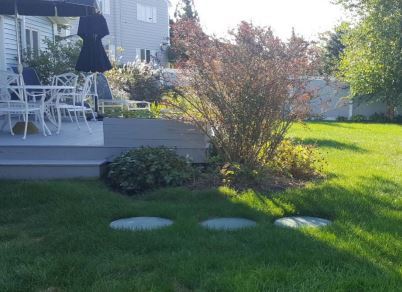A Major Step Forward for Suffolk County’s Subwatersheds Wastewater PlanLast month, Suffolk County reached an important milestone on the way to implementing its Subwatersheds Wastewater Plan (SWP) which will play an instrumental role in reducing nitrogen pollution in what is the fourth most populous county in New York State. On March 17, the Suffolk County Legislature unanimously approved a resolution adopting the State Environmental Quality Review Act (SEQRA) Statement of Findings for the Final Generic Environmental Impact Statement on the county’s SWP. The Statement of Findings, as acknowledged in the resolution, “certifies that the requirements of SEQRA have been met and that consistent with social, economic, and other essential considerations,” the SWP was developed from among reasonable alternatives. Moreover, the Statement of Findings recognizes the SWP “as a choice that avoids or minimizes potential adverse environmental impacts to the maximum extent practicable.” The resolution was introduced by Presiding Officer Robert Calarco, at the request of County Executive Steve Bellone and Legislator Bridget Fleming and was co-sponsored by Legislators Susan Berland, Bridget Fleming, Steven Flotteron, Jason Richberg, and William Spencer. The SWP is a rigorous, science-based roadmap for shifting away from reliance on conventional cesspools and septic systems, which are the primary source of nitrogen pollution that are fouling local waterways and groundwater. It is intended to guide policymakers in the development of a Suffolk County Wastewater Management Program that seeks to mitigate this pollution. The strategy described in Suffolk County’s SWP was developed in partnership with the Long Island Nitrogen Action Plan (LINAP) and in collaboration with numerous project partners, stakeholders, and technical experts. The SWP is the product of years of intensive research, documentation, modeling, and evaluation of all of Suffolk County’s water resources and provides a parcel-specific roadmap on how to address the nitrogen crisis through wastewater upgrades and other nitrogen pollution mitigation strategies. The plan seeks to arrest and reverse the existing trend of degrading water quality over a 10-year period.
Suffolk County Wastewater Management District Feasibility StudyWork is nearly complete on the Countywide Wastewater Management District (CWMD) feasibility study, identified as an early action item in the LINAP scope. The study, conducted by Raftelis, a leading financial and management consulting firm that specializes in the water and wastewater utility industry, will identify the various essential actions required to establish the CWMD as well as the management structures and financing required for its operation. The Long Island Regional Planning Council is funding the study through a LINAP grant received from the New York State Department of Environmental Conservation. Establishing a CWMD in Suffolk County will provide the critical administrative and organizational structure to identify, evaluate and manage the wastewater infrastructure needed to improve groundwater and surface water quality. This includes the replacement of outdated cesspools and septic systems with Innovative Alternative Onsite Wastewater Treatment Systems. Numerous stakeholders including the LIRPC, the Suffolk County Water Authority, Long Island Board of Realtors, Long Island Builders Institute, The Nature Conservancy, Group for the East End, and Citizens Campaign for the Environment collaborated on the study. The full report will be released in early May. Septic Improvement ProgramSuffolk County continues to effectively transition from the use of outdated cesspools and septic systems to Innovative and Alternative Onsite Wastewater Treatment Systems (I/A OWTS). Under the County’s Septic Improvement Program, homeowners are eligible for a grant for the purchase and installation of an approved I/A OWTS and associated engineering and design services. Under the program, homeowners who decide to replace their cesspool or septic system with the new and advanced technologies are eligible up to $30,000 in grants from Suffolk County and the New York State Septic System Replacement Fund to offset the cost of one of the new systems. In addition to the grant, homeowners can qualify for low interest loans from Community Development Corporation of Long Island for up to $10,000 to cover any additional costs such as engineering and soils analysis. As of April 16, 2020, 1494 people have applied for the grants, of which 370 systems have been installed, with an additional 205 installations pending and 187 in progress. Outside of the County SIP program, there have been 418 systems installed for a total of 788 throughout the county. Some of these additional installations were funded by other sources including town Community Preservation Funds and the State Septic System Replacement fund.
Innovative/Alternative Onsite Wastewater Treatment System Installation (Fuji Clean CEN Series) – Photo Credit: Suffolk County IMPORTANT UPDATE IN RESPONSE TO COVID-19 Due to the current response to the Coronavirus (Covid-19), the Suffolk County Department of Health Services (SCDHS) processing and issuance of Septic Improvement Program and State Septic System Replacement Program (SSRP) grants may take longer than expected. AN EXCEPTION WILL BE MADE FOR ALL IDENTIFIED CATASTROPHIC FAILURES OR COLLASPES THAT ARE DETERMINED TO BE AN IMMEDIATE THREAT TO PUBLIC HEALTH AND SAFETY, where SCDHS will make every attempt to process these as quick as possible. Septic/Cesspool Upgrade Program Enterprise (SCUPE)Suffolk County continues to examine, test, and approve new nitrogen removing septic systems (I/A OWTS) technologies through its DEC-funded Septic/Cesspool Upgrade Program Enterprise (SCUPE). In 2015, the County started to test these systems at private residences throughout Suffolk County. This demonstration program resulted in a total of 13 proprietary technologies installed on 35 residential sites. Suffolk County has approved 8 of these technologies for provisional use. To be approved for provisional use, the average effluent total nitrogen concentration cannot exceed 19 milligrams per liter. The 2019 cumulative average effluent total nitrogen concentration of all provisionally approved systems sampled was 16 milligrams per liter. Of the installed systems, 70 percent are utilizing technologies that are performing at a rate of 13 milligrams per liter! In addition, the County is working with the NYS Center for Clean Water Technology to test and monitor 2 constructed wetland systems and 8 nitrogen reducing biofilters (NRB’s).
I/A OWTS installed. Photo Credit: Suffolk County Suffolk County Environmental Health Information Management System (“EHIMS”)In the fall of 2019, Suffolk County began a phased launch of their Environmental Health Information Management System (EHIMS). In its current form, EHIMS provides a centralized, GIS linked database to support permitting and oversight of Innovative/Alternative Onsite Wastewater Treatment Systems installations and maintenance countywide. The system greatly improves communication between County offices through a shared database, and shared workflows, that notifies different groups when there is a new application or task that needs their attention. Additional phases of EHIMS, which will roll out over the course of 2020, will support the public interface and enforcement. EHIMS will allow citizens to submit applications, upload documents, make payments, and get real-time status updates through an online portal. This will improve communication between the County and licensed professionals as the public portal will facilitate the sharing of submissions and revisions. Suffolk County Coastal Resiliency InitiativeIn 2015 Suffolk County was awarded $390 million in funding through the Governor’s Office of Storm Recovery (GOSR) to install sewers in communities in unsewered, low-lying, areas along the County’s south shore that had been inundated by Superstorm Sandy. The sewer projects, known as the Suffolk County Coastal Resiliency Initiative, marks the largest investment in water quality infrastructure in the County in more than 40 years and will eliminate over 7,000 cesspools and septic systems in the Carlls River Watershed (North Babylon, West Babylon, Wyandanch), Patchogue River Watershed (Village of Patchogue), the Forge River Watershed (Mastic) and Connetquot River Watershed (Oakdale); improving water quality, boosting economic development and protecting against storm surges by strengthening wetlands. Design is underway and construction is expected to begin in 2020. The projects will use low-pressure sewer systems, that include pumps buried in front of each house; a method that is cost effective and causes less construction disruption.
Photo Credit: Kyle Rabin |
Footer
Contact
STAY INFORMED
Enter your email address to receive email updates from the LIRPC:







